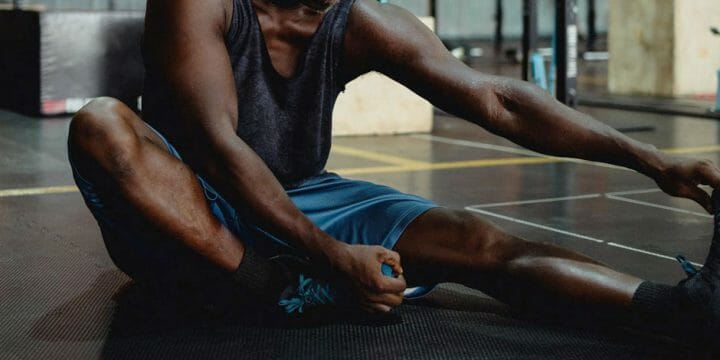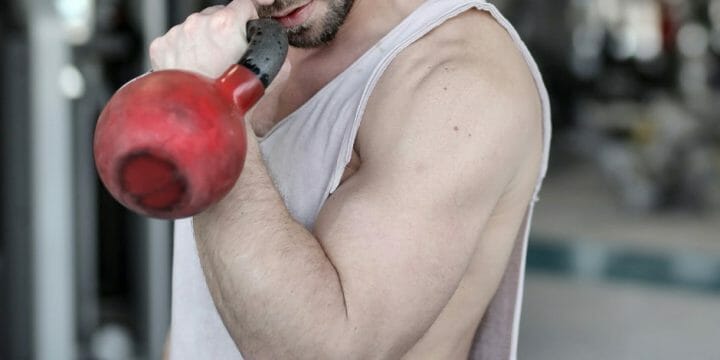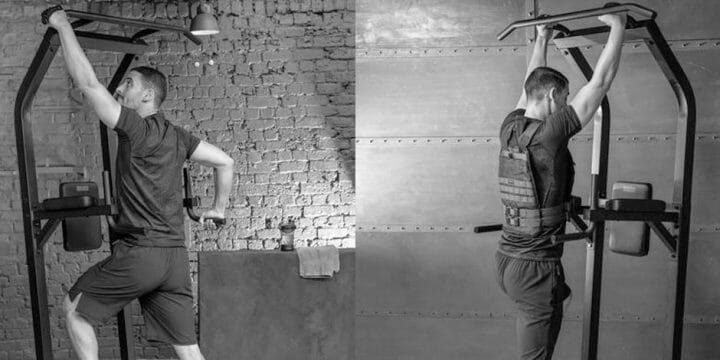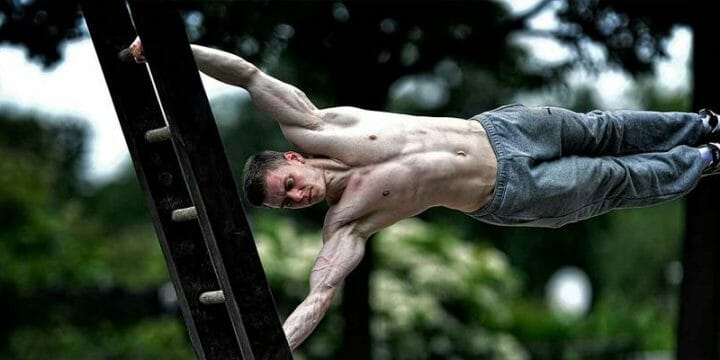Quadriceps consists of four muscles, vastus lateralis, vastus medialis, vastus intermedius, and rectus femoris.
Isolating all four quadriceps muscles can be challenging since you will likely activate other big muscles.
We singled out only the best ones based on our observations and comprehensive research on more than 30 quad-isolation exercises.
My fitness team and I evaluated all quad isolation exercises through specific criteria.
Read below for the best quad isolation exercises, all four quadriceps muscles, the difference between isolation and compound exercises, and more.
Quick Summary
- The best quad isolation exercises include low leg press, sissy squat, step-ups, single-leg extension isometric hold, resistance band single-leg extension, and machine leg extension.
- The four muscles you must develop to target the whole quadriceps include vastus lateralis, vastus medialis, vastus intermedius, and the biggest rectus femoris.
- A study by the National Institutes of Health (NIH) reveals that Delayed Onset Muscle Soreness (DOMS) from quad isolation exercises typically lasts 24 to 48 hours, but can extend up to seven days.
- In my opinion, Incorporating a variety of quad isolation exercises, like those mentioned, can significantly enhance leg strength and definition.
6 Best Quad Isolation Exercises

Upon initial testing of more than 30 exercises, we single out the six best quad isolation exercises that are the best for hypertrophy and building strength.
All exercises are beginner-friendly, but proper technique and following instructions are necessary to avoid injuries.
Below you will find the six best quad isolation exercises according to the previously mentioned criteria.
"Just because they don’t recruit many muscles at once doesn’t mean that single-joint exercises don’t pack a punch."
- Jake Boly, Master’s in Sports Science & a Bachelor’s in Exercise Science
1. Low Leg Press
When I first tried the low leg press, I immediately noticed how it effectively isolated my rectus femoris and other quadriceps muscles.
Leg press belongs to the compound exercises, but it is considered isolation since it won’t require much work from stabilizer muscles in your hip and ankle joint.
In addition, your posterior chain muscles, such as your hamstrings, will be activated too.
See also this article about leg press foot placement you can try.
How to Perform a Low Leg Press:
- Set the appropriate weight on the leg press machine and ensure you can perform up to 10 repetitions.
- Lie inside the leg press machine and place your feet lower than the traditional leg press exercise requires.
- Hold the bars on the side with both hands to ensure maximal stability.
- Start the exercise by unlocking the safety pins and pushing the leg press surface with your feet further away.
- When your knees are almost fully extended, reverse the motion to return to the starting position.
- Repeat for 3-4 sets and up to 10 repetitions.
2. Sissy Squat
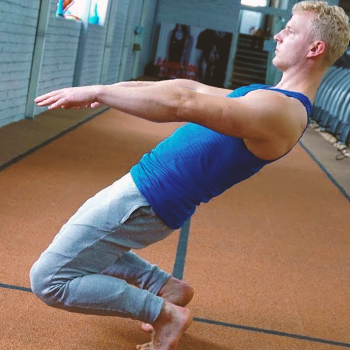
After incorporating sissy squats into my workouts, I found them to be a fantastic variation of the traditional squat and a quad-dominant exercise.
Its goal is to change the angle of your ankle and knees, activating your quadriceps muscles more due to bigger leverage.
Sissy squats were historically classified as a dangerous lower body exercise.
Many people implement this exercise to experience healthier knee joints and less pain in the joints above and below.
How to Perform a Sissy Squat:
- Assume a standing position with your feet closer than shoulder-width apart and your back flat.
- Stand near the squat rack and hold the barbell or the rack's side with both hands.
- Start the exercise by lowering yourself to a squat position, but plantar flex your ankles, push your knees forward, and lean your body backward to enter the sissy squat position.
- Return to the starting position when you reach the end range of motion and can’t go deeper into the sissy squat position.
- Repeat for as many reps as possible without compromising the form and for up to 3 sets.
3. Step-Ups
Step-ups are excellent lower body exercises for developing your posterior and anterior chain leg muscles.
They will activate hamstrings, glutes, hip flexors, and all four quadriceps muscles.
Depending on your personal goals, you may perform step-ups with your back straight up or bent forward.
Bending forward will activate more posterior chain muscles and vice versa.
How to Perform Step-Ups:
- Assume a standing position shoulder-width apart before the elevated surface, a box, and hold dumbbells in each hand.
- Select the dumbbell weight to perform up to 6 repetitions with each leg.
- Start the exercise by stepping on the box with your right foot while maintaining a straight back.
- Push through with your right foot and propel yourself up into the standing position on the box.
- When you reach the top position, reverse the movement to return to the starting position, encapsulating one repetition.
- Finish with one leg first before working out the other one, and repeat for up to 3 sets.
4. Single-Leg Extension Isometric Holds
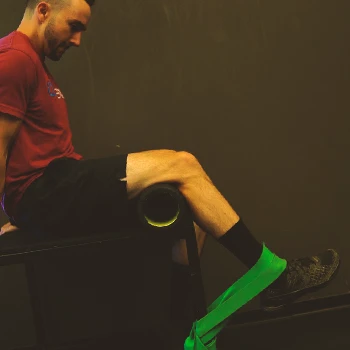
Single-leg extension isometric holds are a variation of traditional bilateral extension isometric holds.
The unilateral version makes this exercise more functional than its original version.
This exercise isolates all the necessary quad muscles while keeping your other muscle relaxed due to the unique position and angles of the machine.
How to Perform a Single-Leg Extension Isometric Holds:
- Load the leg extension machine with the appropriate weight to perform up to 6 reps/holds with each leg.
- Sit on the leg extension machine, then place your right foot under the leg machine attachment while keeping your left leg on the floor.
- Start the exercise by extending your knee and keeping your body balanced by holding the handles near the machine.
- When you extend your knees fully, hold the position for 6 seconds.
- Reverse the motion by flexing your knee to return to the starting position.
- Repeat for up to 6 reps/holds with each leg and three sets.
5. Resistance Band Single-Leg Extension
Resistance band single-leg extension is similar to the cable machine single-leg extension exercise, but the band will add progressive resistance.
Banded single-leg extensions are functional exercises that build strength in all quadriceps muscles.
How to Perform Resistance Band Single-Leg Extensions:
- Wrap the band around the squat rack and place your right foot in the loop of the band.
- Face away from the rack and step outside to keep the band's tension active (feet shoulder-width apart).
- Start the exercise by extending your knee joint while keeping your hips parallel to the ground.
- When you fully extend the knee, hold that position for a second, and reverse the whole motion to return to the starting position.
- Repeat for up to 8 reps with each leg and 3-4 sets.
6. Leg Extension Machine
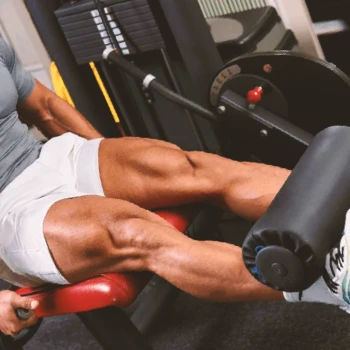
Leg machine extension is a quad dominant exercise that will isolate all your quadriceps muscles due to the unique nature of the machine.
It is frequently used for rehabilitation purposes where individuals aren’t allowed to exercise with their feet on the ground.
It can also serve as an excellent quad isolation exercise and should be implemented into a weekly workout regime, preferably at the end of the workout.
How to Perform Leg Machine Extensions
- Assume a sitting position on the leg machine and set the appropriate weight to perform up to 12 repetitions.
- Hold the bars near the leg extension machine to ensure maximal stability.
- Start the exercise by extending your knees and keeping your ankles slightly dorsiflexion.
- Hold that position for a second or two when your knees are fully extended.
- Reverse the motion of the exercise by slowly bending your knees to return to the starting position.
- Repeat for up to 12 repetitions and 3-4 sets.
What Are the 4 Quad Muscles?

The quad muscles include vastus lateralis, vastus medialis, vastus intermedius, and rectus femoris.
These four muscles are called the quadriceps femoris or the quad muscle.
Vastus medialis, lateralis, and intermedius are responsible only for flexing the knee, while rectus femoris has a dual function of flexing the knee and the hip.
1. Rectus Femoris
The rectus femoris is the second biggest of all four quadriceps muscles.
It is located in the middle of the femur bone and has a dual function.
The primary function of the rectus femoris is knee extension, while the secondary is hip flexion.
The rectus femoris is the main antagonist to the hamstring muscles at the hip and the knee.
It is one of the weakest knee extensors when you are in a seated position.
Also, the hip flexion will be limited to the same position, popularly known as active insufficiency.
When the knee joint is fully flexed, the rectus femoris has achieved its maximum length, limiting the hip extension, also known as passive insufficiency.
2. Vastus Medialis
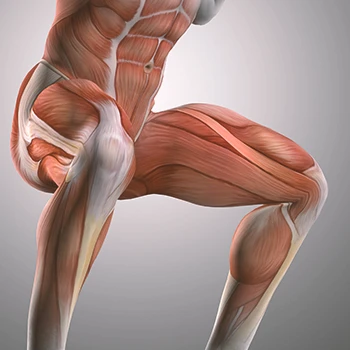
The Vastus medialis is another quad muscle located on the femur's inner side.
Vastus medialis originates from the upper part of the femur bone and inserts into the quadriceps femoris tendon, which then inserts into the patella, the small sesamoid bone.
Together with other muscles of the quadriceps complex, the vastus medialis has the primary function of helping extend the knee.
However, it also contributes to the accurate tracking of the patella bone.
Weakness of this muscle is often associated with patellofemoral pain and patellar maltracking.
3. Vastus Intermedius
The Vastus intermedius is the shortest of all four quadriceps muscles and is located centrally, below the rectus femoris.
Furthermore, it is located in the anterior compartment of the thigh muscles.
The vastus intermedius originates from the upper portion of the lateral and anterior surfaces of the femur bone and the intermuscular septum.
Together with the rest of the quadriceps muscles, the vastus intermedius inserts into the patella.
The primary function of the vastus intermedius is knee extension.
4. Vastus Lateralis
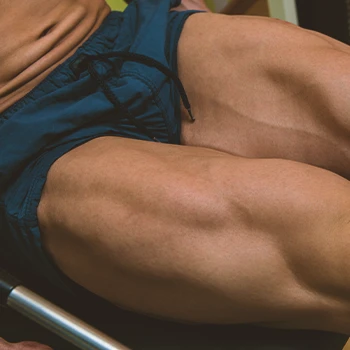
Vastus lateralis is the outer quadriceps muscle on the femur bone's outer side.
In addition, the vastus lateralis is the largest muscle of the entire quadriceps complex.
It has the same function as the vastus medialis, intermedius, and rectus femoris, knee extension.
Lastly, it inserts into the patellar bone with the other three quadriceps muscles.
Isolation vs Compound Exercises – What’s the Difference?
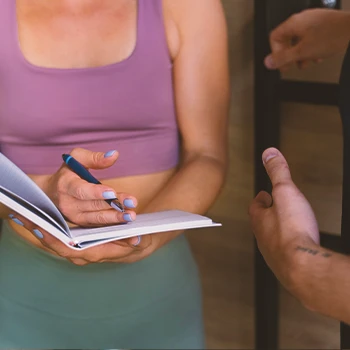
Isolation exercises are all movements that include the work of a single joint and a specific muscle or muscle group.
According to a study published by the National Institutes of Health (NIH), compound exercises are all movements that simultaneously work multiple joints and activate large muscle groups [1].
The main difference between isolation and compound exercises is the number of joints and muscle groups involved and the complexity of the movement.
Always perform compound exercises at the beginning of the workout since they require much more energy than isolation exercises.
Compound exercises are more demanding on your central nervous system and require you to be fresh to perform the exercise safely.
On the contrary, isolation exercises are much less demanding energy-wise and you can include them as supplementary lifts at the end of the workout.
Both types of quad exercises should be incorporated into the single workout program, but with the proper sequence and workload.
"To zero in on the quads without having to balance yourself standing, the leg extension (misnamed because the action is technically knee extension) is often done as a final movement in your leg assault."
- Parker Hyde, M.S. in Exercise Science & The Lead Graduate Student in the Human Performance Lab
Related Article: Best Leg Workouts for Weight Loss
Complications Associated With Quad Isolation Exercises

Here are some complications you may experience when isolating your quads:
1. Delayed Onset Muscle Soreness
Delayed onset muscle soreness, or DOMS, is caused by overtraining or doing more than usual.
This means you are working harder than you are supposed to.
This can also happen if you are doing new leg exercises which your body isn't used to yet.
You can experience delayed onset muscle soreness if you are new to quad isolation training.
According to insights from a study published by the National Institutes of Health (NIH), DOMS lasts between 24 and 48 hours but can last up to seven days [2].
2. Knee Pain
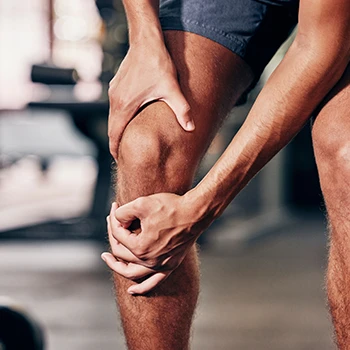
Based on a study published by the National Institutes of Health (NIH), some quad isolation or quad-centric exercises put a lot of stress on knee joints [3].
The sissy squat or knees-over-toes lunges are the perfect example.
If you feel discomfort from doing quad exercises from the list, it doesn't mean you should stop doing them but adjust the workload.
Lower the sets and repetitions or increase the rest periods between the sets.
Related: Best Resistance Band Exercises to Relieve Knee Pain
3. Tight Quads
Intense resistance training often leads to tight and short muscles, especially if you forget to stretch during the week.
You shouldn't stretch after the lifting session, but do a separate workout just for stretching.
You must take care of tight quads because they can negatively affect your ankle or hip joints.
According to a study published by the National Institutes of Health (NIH), tight quads can lead to several issues, such as patellar alta and patellar tilt, which may cause weakness and muscle imbalance [4].
Implement stretching workouts like the half kneeling quad stretch at least twice weekly to avoid adverse effects in subsequent joints.
FAQs
How Do You Isolate Your Quads?
You isolate your quads by only doing exercises that incorporate knee extension. Primary knee extensors include four quadriceps muscles.
Which Workout Isolates the Quadriceps?
The workout that isolates the quadriceps includes knee-extending exercises. Some of those exercises include leg machine extensions, cable machine extensions, and sissy squats.
What Is the Most Effective Quad Workout?
The most effective quad workout is the one containing knee extension exercises. Some include cable and leg machine extensions, sissy squats, and low leg presses.
References:
- https://www.ncbi.nlm.nih.gov/pmc/articles/PMC4592763/
- https://pubmed.ncbi.nlm.nih.gov/12617692/
- https://www.ncbi.nlm.nih.gov/pmc/articles/PMC5609004/
- www.ncbi.nlm.nih.gov/pmc/articles/PMC8404765/
About The Author
You May Also Like
